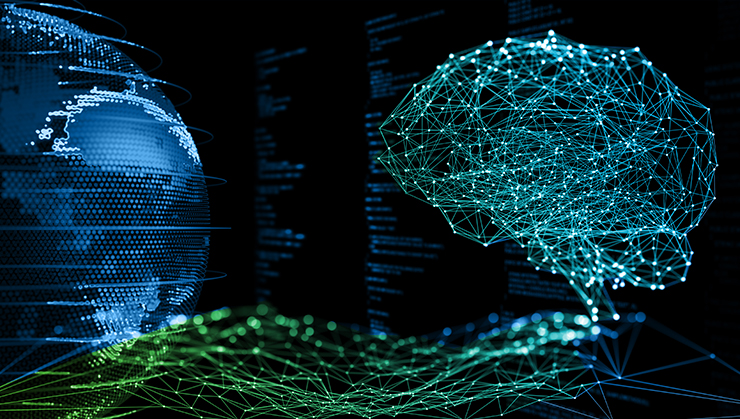
Growing up in Puerto Rico, for Mario Oyola hurricanes were a fact of life. But for young Mario, fascination outweighed fear, so he put instruments outside to measure wind speed and rainfall as the storms approached. A naturally curious boy, more drawn to the world around him than to the television, he was always disappointed when his instruments disappeared in the gale, preventing him from recovering the data he looked so forward to interpreting.

It wouldn’t be long, however, before he discovered PhotoReading, a technique used to take large quantities of information and process it at a rapid pace. After the course, Mario was fully hooked on the brain, fascinated by its innerworkings. Mario says, “Our brains are three pounds of fat that’s somehow in charge of everything we do and everything we feel. Everything is so complex that what might be true about the brain today may not be true tomorrow, so those of us who study the brain are constantly learning.”
When thinking about Parsons, one might imagine bridges, satellite communications, cybersecurity, or airports, but six years ago, after graduating with a PhD in neuroscience from elite research institution Baylor College of Medicine, Mario joined Parsons as a neuroscientist in our biomedical division. Here he studies post-traumatic stress disorder (PTSD) and the association between mental health disorders and traumatic brain injuries. Working with an interdisciplinary team of people in a wide range of scientific fields, such as psychologists, engineers, endocrinologists, mathematicians, and bioethicists, a neuroscientist like Mario can take what he’s previously only tested on models and conduct trials that aim at a holistic, standardized approach to very complex, individual brain issues.
One of the best things about this position is the fantastic opportunity to oversee the whole clinical research landscape, which energizes me to stay current on topics far beyond the brain.”
When asked how he envisions science moving forward in ways that could really benefit humanity, Mario is quick to mention the ongoing clinical trials of something called the CRISPR-cas system, a genome-editing technology known by its acronym, which stands for “clustered regularly interspaced short palindromic repeats.” He sees great potential in using this technology to treat a wide range of disorders.
“Our bodies have this way of correcting errors. Errors can develop into mutations in the cells, which can evolve into cancer, and perhaps even Alzheimer’s and Parkinson’s. What genome editing allows you to do is have the cells automatically correct those errors, which, we hope, will prevent some of the most serious diseases affecting us today,” says Mario.
What’s also exciting to Mario is just how vast the biomedical field is and how many opportunities lay before him and his colleagues. An emerging discipline will always produce new challenges, so Mario’s fostered a more informal, open-door policy where everyone has a voice in how to confront those challenges head on. Parsons has also afforded him the opportunity to continue his education beyond the confines of a classroom and to pass on what he knows to the many young people he mentors. Mario says, “I always tell people I’ll give them my best. But I always make that offer with the expectation that they give me their best too. And you know what? They always do.”

Mario learned early on from his mother that finding happiness is about being the best at whatever you do and being proud of it. He says, “My mother taught me that if you’re a research assistant, be the best research assistant you possibly can. If you’re a truck driver, take immense pride in that. Whatever you do, try every day to be the best at it and enjoy the process.”
Maybe that sounds like advice you’ve heard before, but according to Mario—who dispelled the myth that we only use 10 percent of our brain—approaching life with that attitude has allowed him to explore different areas of his brain and see what is working instead of just focusing on what’s not. “Perhaps 90 percent of experiments fail, but when you fail, you have an opportunity to come back stronger. And there’s real power in taking the time to acknowledge and examine the things you tried that have worked—that’s just as important as getting back on the horse.”
In Mario’s role, there are always times when he and his colleagues need to weather the storm to get at the crucial information they need to pioneer emerging treatments and technologies that will forever improve our lives. But these days, Mario’s not out there by himself; he’s got a whole team of professionals from a variety of disciplines behind him to collect the data he needs to ensure there are sunnier skies ahead for all of us.
Mario is also a contributor to several academic journals. To read more about the latest and greatest in neuroscience, according to Mario, click here!